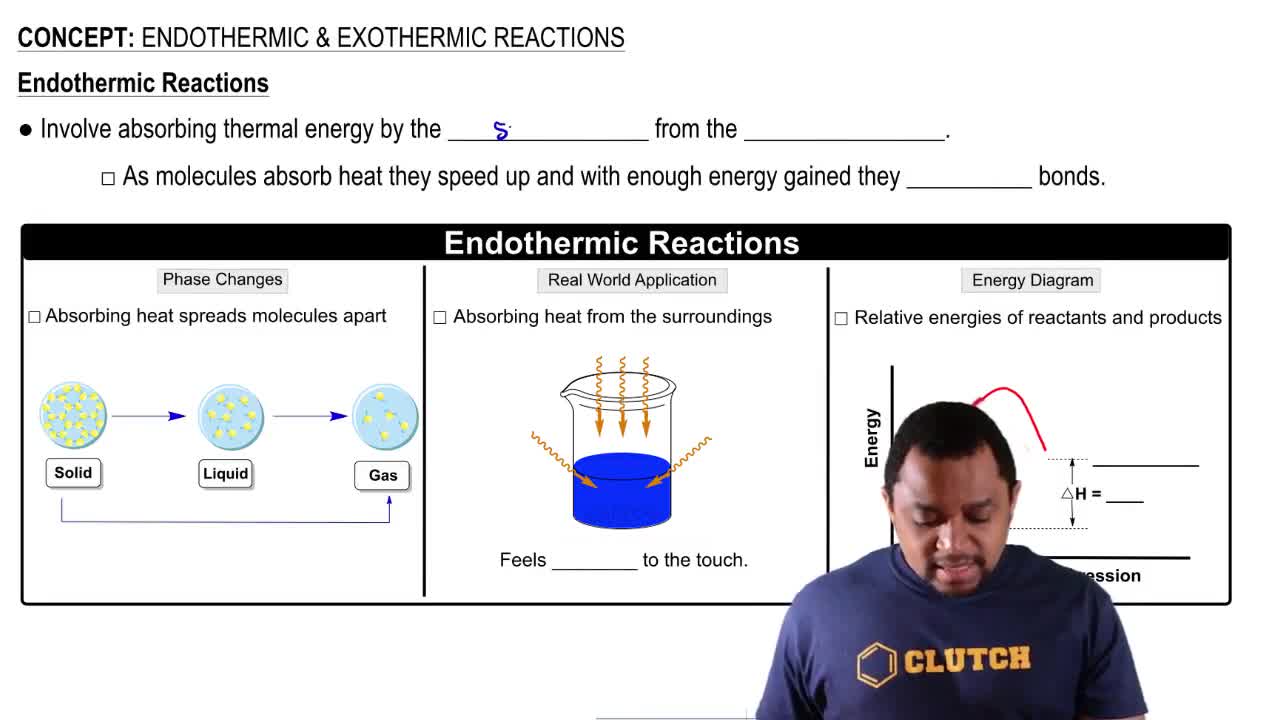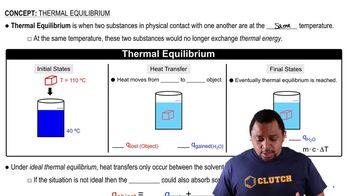Here are the essential concepts you must grasp in order to answer the question correctly.
Le Châtelier’s Principle
Le Châtelier’s Principle states that if a dynamic equilibrium is disturbed by changing the conditions, the position of equilibrium shifts to counteract the change. This means that if a reactant or product concentration is altered, the system will adjust to restore equilibrium, either by favoring the forward or reverse reaction. Understanding this principle is crucial for predicting how changes in concentration, pressure, or temperature affect the equilibrium state.
Recommended video:
Endothermic Reactions
Endothermic reactions absorb heat from their surroundings, resulting in a decrease in temperature of the environment. In the context of the given reaction, the addition of heat would favor the formation of products, shifting the equilibrium to the right. Recognizing whether a reaction is endothermic or exothermic helps in predicting how temperature changes will influence the equilibrium position.
Recommended video:
Endothermic & Exothermic Reactions
Equilibrium Concentration
Equilibrium concentration refers to the concentrations of reactants and products in a chemical reaction at equilibrium, where the rate of the forward reaction equals the rate of the reverse reaction. Changes in concentration due to the addition of reactants or the removal of products can shift the equilibrium position, affecting these concentrations. Understanding how to manipulate these concentrations is essential for predicting the outcome of the reaction under various conditions.
Recommended video:




